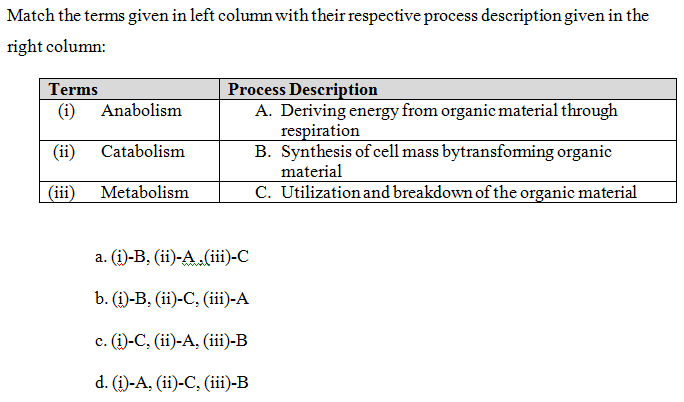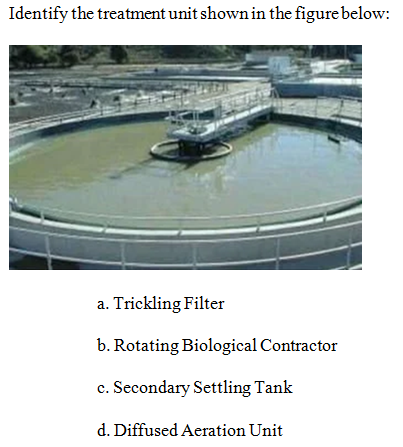NPTEL Wastewater Treatment and Recycling Week 6 Assignment Answers 2024
1. An Activated Sludge Process consist of:
a. An aeration tank and a secondary sedimentation tank
b. An aeration tank and a packed bed filter
c. a secondary sedimentation tank and a packed bed filter
d. An aeration tank and a membrane filtration unit
Answer :- For Answers Click Here
2. Identify the correct statements regarding secondary treatment of wastewater:
Statement I: Secondary treatment of wastewater primarily targets removal of BOD.
Statement II: Biological secondary treatment units rely on the ability of organic
matter to disinfect or kill microorganisms.
a. Statement I is correct, while statement Il is incorrect
b. Statement Il is correct, while statement I is incorrect
c. Both, statements I and II are correct
d. Both, statements I and II are incorrect
Answer :- For Answers Click Here
3. Which of the following group of organisms are involved microbial decay of organic matter through aerobic or anaerobic respiration:
a. Photoautotrophs
b. Photoheterotrophs
c. Chemoautotrophs
d. Chemoheterotrophs
Answer :- For Answers Click Here
4. Under microbial growth in a batch process, which of the following phase has nearly net zero growth rate:
a. Lag phase and log phase
b. Log phase and decay phase
c. Stationary phase and decay phase
d. Lag phase and stationary phase
Answer :-
5.

Answer :-
6. If there is no loss of biomass in treated effluent (TSS in effluent is 0) from an ASP, the Sludge Retention Time (SRT) in aeration tank would be:
a. TSS in aeration Tank / Sludge Volume Index
b. TSS in aeration Tank/TSS wasted per day
c. TSS in aeration Tank / Organic Loading Rate
d. TSS in aeration Tank / TSS Recycled per day
Answer :- For Answers Click Here
7. Which of the following is NOT a valid assumption for activated sludge process?
a. Steady state conditions are maintained.
b. Aeration Tank is completely mixed
c. The rate of BOD decay is zero in aeration tank
d. No reaction takes place in secondary clarifier, which works only for solids separation
Answer :-
8. Trickling Filter (TF) used for wastewater treatment in an example of:
a. Aerobic reactor with suspended growth of biomass
b. Anaerobic reactor with attached growth of biomass
c. Aerobic reactor with attached growth of biomass
d. Anaerobic reactor with suspended growth of biomass
Answer :-
9. In which of the following units, attached microbial growth is passed through the wastewater, keeping only part of biomass submerged, at any given point of time:
a. Activated Sludge Process
b. Rotating Biological Contractor
c. Trickling Filter
d. Seauencing Batch Reactor
Answer :-
10.

Answer :- For Answers Click Here
11. For a microbial species, the specific growth rate u at 400 mg/L substrate concentration was found to be 4.25 d-!, whereas it’s maximum specific growth rate maxis6.8 day!. The half saturation constant for this species would be:
a. 150 mg/L
b. 240 mg/L
ç. 640 mg/L
d. 1067 mg/L
Answer :-
12. In an activated sludge treatment system having 2000 m’ size aeration tank, MLVSS in aeration tank and in retum sludge line was estimated as 3600 mg/L and 12600 mg/L, respectively. The recirculation ratio for the aeration tank is:
a. 0.16
b. 0.28
c. 0.40
d. 0.62
Answer :-

13. The effective volume of the aeration tank should be (in m3):
Answer :- For Answers Click Here
14. The volumetric loading rate is (in kg/m3day):
Answer :-
15. The food to micro-organism ratio is (in kg of BOD/kg of biomass/d):
Answer :- For Answers Click Here






